Mythology references
One Piece has loads of references to Japanese myths and folklore, however Wano is especially loaded with these; and how could it not be? It is inspired by Japan, after all. Moreover, since Kaido can transform into a dragon, there must be some kind of reference to Japanese myths and legends regarding these legendary creatures.
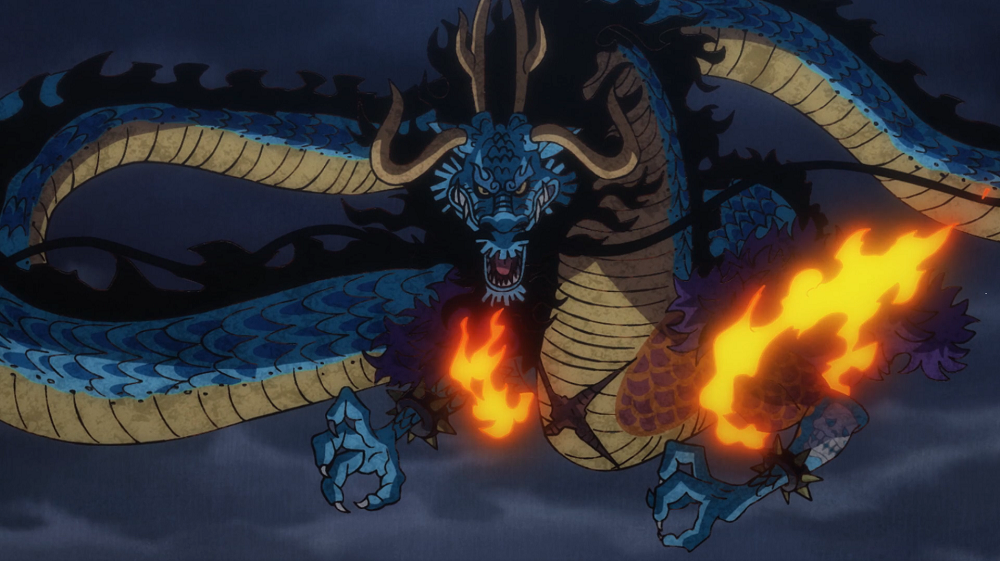
There’s one in particular, which might be the key to Kaido’s backstory: the story of the Enoshima Dragon.
According to this myth, in the mountains near the Koshigoe village lived a five-headed dragon, called Gozuryu, who terrorized the inhabitants over a period of some-thousand years by provoking countless natural disasters such as huge storms, floods and earthquakes, as well as eating their children. The villagers kept praying and praying, until something happened: in 31st May, 552 AD, during a bigger and more violent storm than the usual, the clouds split in two and a rock began to emerge from the sea. A beautiful woman descended from a ray of light where the clouds slit and sat foot on the island just created, making it her home. The dragon, who assisted to the whole thing, immediately fell in love with her and asked her to marry him.
The woman, who was perfectly aware of the dragon’s evil actions, was none other than the goddess Benzaiten herself.
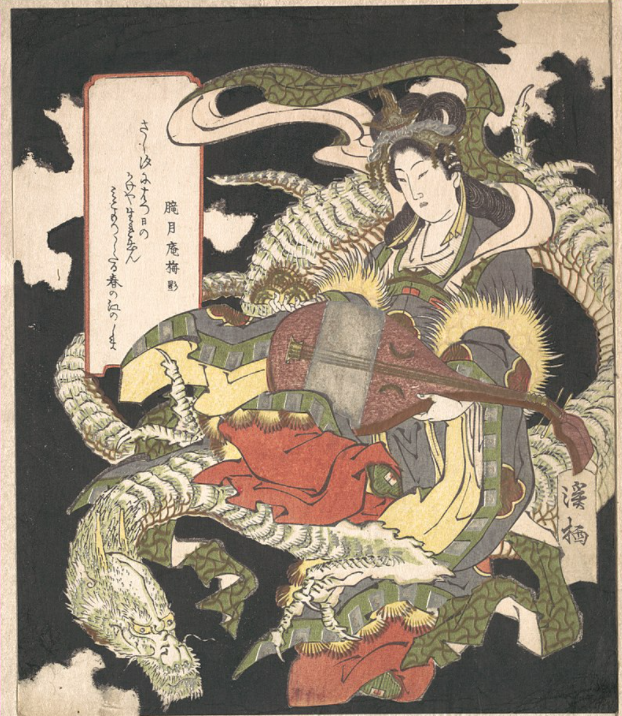
Now, there are two versions of how the story ends: in one, the goddess turned him down at first, and told the dragon she would have considered his proposal only if he helped the people he used to terrorise. Gozuryu accepted and the village prospered thanks to their dual protection; in the end, the goddess agreed to marry him and the couple lived happily until the dragon met his demise. In the other version, Benzaiten straight up refused Gozuryu’s proposal due to his evil actions; ashamed for his wrongdoings, the dragon promised the goddess he would have never disturbed the village again, and retired in the mountains where he died of guilt.
Anyway, regardless of how the story goes, when the dragon died he fused with the land of Kamakura, creating the Dragon’s Mouth hill (Japanese: Tatsu no kuchi yama) facing south, the direction of the island where his beloved lived. Needless to say, the island of the myth is Enoshima.
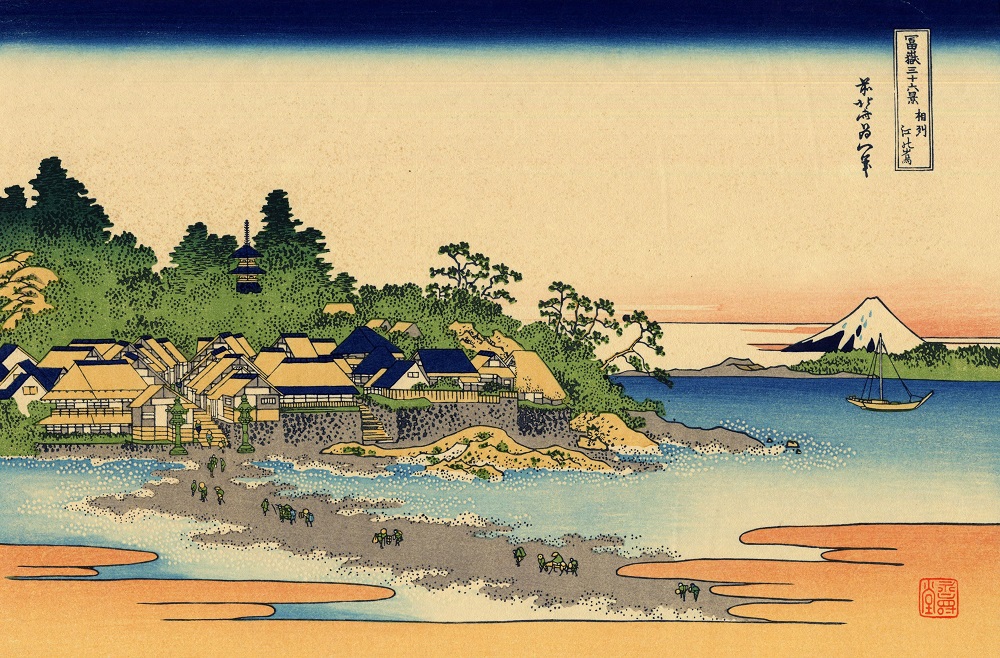
The comparison between Kaido and Gozuryu is immediate: both are extremely cruel towards children, with the former having no qualms beating them, even his own, and the latter eating them. Moreover, the Emperor, much like the five-headed dragon, terrorizes the inhabitants of the place near where he lives (Wano Country and Koshigoe Village respectively) turning the land into completely inhabitable wasteland in the process, and is capable of causing huge storms; his apparition in chapter 921 is also being accompanied by a thunderstorm. Note that, in Chapter 1003, Zoro states that fighting Kaido was like “facing a natural disaster”, much like the natural catastrophes Gozuryu caused.
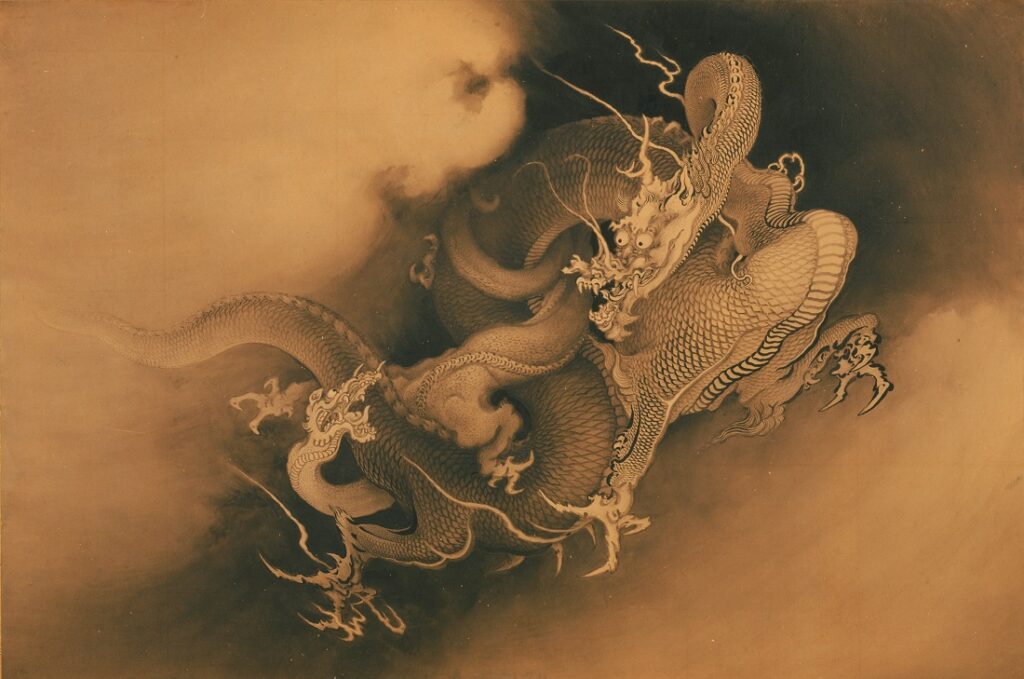
Now, let’s talk about Benzaiten.
Goddess of water (especially rivers), eloquence, and good fortune, Benzaiten is considered one of the protector deities of Japan, where she’s one of the most beloved and revered gods: every major city has at least one place for her worship and countless temples and shrines dedicated to her cult are present in many other areas across the country, all located near water sources such as rivers, ponds, lakes or even in the sea. She is part of Japan’s Seven Lucky Gods, and she’s the only woman among them.
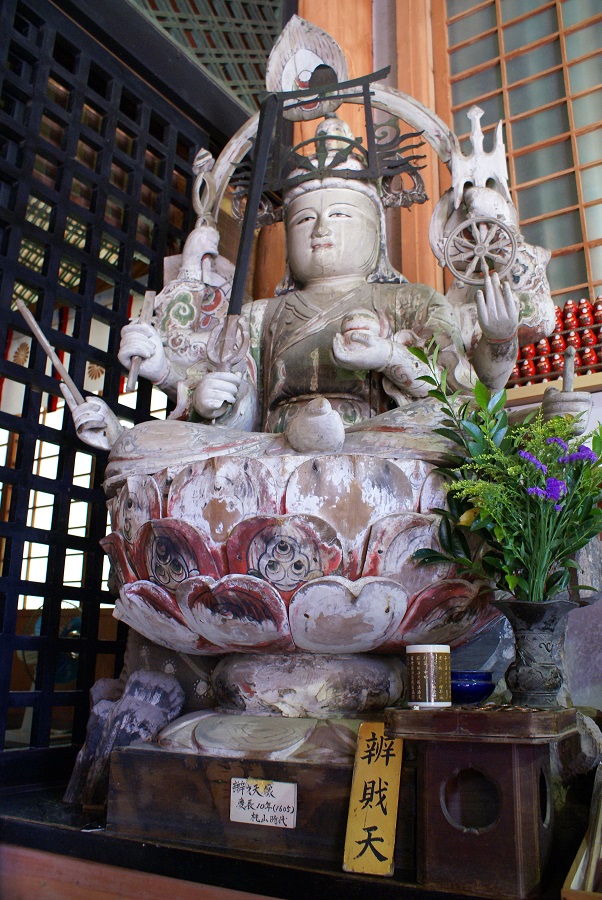
Benzaiten, however, is not originally Japanese: she is in fact a syncretic deity derived from the Hindu goddess Saraswati whose cult was brought to Japan by Buddhist monks who arrived in the VII century from China.
Due to her extreme complexity, only the most relevant facts to this theory will be reported.
She wasn’t very popular until the XI century, when her cult was fused with Ugajin’s, an obscure Japanese Kami of water, agriculture and good fortune, often represented as an old man with a snake body. Once this happened, her popularity skyrocketed as a goddess of water and by assonance ‘of everything that flows’: rivers, eloquence, knowledge, music, art and Haki. Even nowadays, Uga Benzaiten, the goddess with Ugajin on her head, is one of the most common Benzaiten representations.
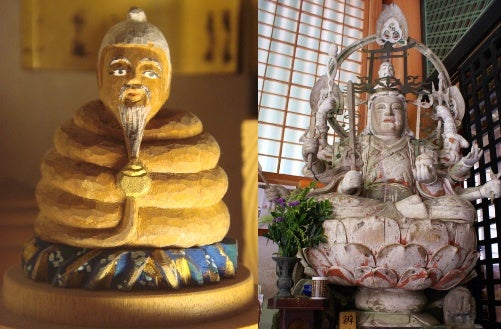
With that being said, how can Benzaiten and Gloriosa be possibly connected?
- Benzaiten is the goddess of water, especially of rivers; and Gloriosa appeared for the very first time, in chapter 514, near a river;
- Benzaiten is the goddess of knowledge; Gloriosa is also very knowledgeable about many things. She immediately recognised Luffy as a man, in chapter 514; in chapter 522 she also explained how Vivre Cards work by seeing Ace’s (which, coincidentally, was produced in Wano) and was able to recognise Love Sickness, which the Kuja doctor had no idea it existed. Also, she likes to stay informed by reading newspapers, even if they have a few days.
When Luffy tells her that he doesn’t read that much and doesn’t really know what’s happening in the world, she comments that there’s a limit to ignorance; - Both lived in an island inhabited only by women: Gloriosa in Amazon Lily, and Benzaiten in Enoshima, since she was the sole inhabitant of said island and also a woman;
- Benzaiten originated from an Indian goddess and Gloriosas, the flowers which Gloriosa was named after, grow in India too! Gloriosa superba is even Tamil Nadu’s national flower.
Due to being goddess of water, Benzaiten was naturally associated with animals connected with said element: snakes, turtles… and dragons. Especially the white ones, since this colour is linked with water in Japanese culture.
Snakes are a big part of Amazon Lily’s culture: almost every warrior on the island has her own Snake Weapon which can be used as a bow, the island’s dome is sculpted with snake motifs, the Perfume Yuda, Kuja Pirates’ flagship, is carried by two Yuda snakes, even Kuja, the name of the tribe, means ‘Nine snakes’
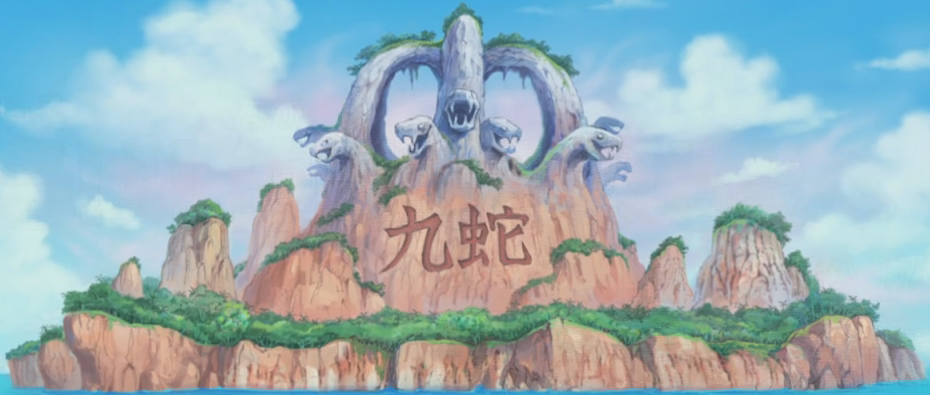
White snakes were considered to be Benzaiten’s main messengers and avatars and Gloriosa in Share the World opening appeared with a blue top and*…* a white snake.

Benzaiten is often being represented with a dragon, she even married one in said myth. However, Kaido is not a Japanese dragon because they have three fingers, while his Seiryu form has four; therefore, he’s a Chinese one. And Amazon Lily’s culture is heavily inspired by China.
Now, let’s talk about turtles.
They are traditionally associated with wise old characters, as Gloriosa is. According to Chinese tradition, turtles were only females (doesn’t it remind you of a certain population?) and had to mate with a snake in order to reproduce; what if I tell you that, due to their serpentine bodies, dragons in Eastern mythology are considered Nagas, which is the same group snakes are part of? Turtle shells had also been used as tools for divination, and Gloriosa can predict the future, too!
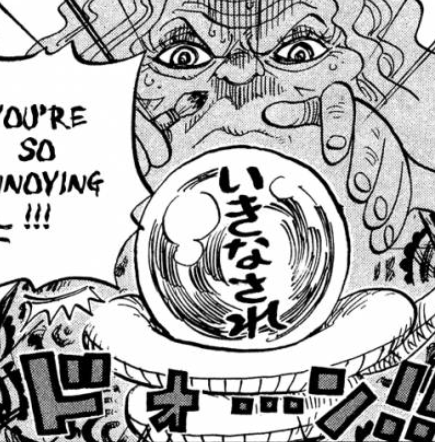
Despite dragons being connected with water, Seiryu’s associated element is wood; water is related to Genbu instead. The latter in Japanese Buddhism is also known as Tamonten (Bishamonten, when worshipped independently) the most powerful of the Four Heavenly Kings, and frequently appears in Benzaiten representations near the goddess. It’s associated with the colour black in Japan, yellow in China and India; both colours are present in Gloriosa’s skirt.
Also, the traditional representation of the Black Warrior is a turtle intertwined with a snake, much like Kujas with their Snake Weapon. Due to these facts, I believe that Gloriosa has eaten the Mythical Zoan Kame Kame no Mi model: Genbu.


